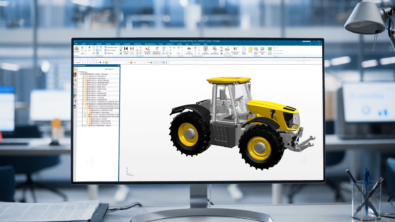🍃 Link cost and sustainability in product design

Today’s focus is increasingly shifting to sustainability and the environmental impact of companies and the products they launch on the market. Based on this, companies are forced to rethink the design of their products and the experience of their customers. There is a well-quoted statistic that says around 80% of the ecological impacts of a product are locked in at the design phase.
One of the major reasons, why pressure to redesign for sustainability is increasing, because of an ongoing shift of lifetime emissions from product operation to product production. A good example of this shift is the automotive industry’s transition from internal combustion engines to zero emission electric vehicles, which is changing the life-cycle emissions profile of passenger vehicles. In fact, electric vehicles produce fewer emissions in the use phase but require additional carbon-intensive materials in the battery.
These examples are significant challenges for manufacturing companies to make products more sustainable, durable, easier to recycle by design, and to stay competitive.

But in great challenge lies great opportunity, and there has never been a better time for change.
So, the question is: How can companies help accelerate the execution of the sustainability transformation and stay profitable while leveraging technology to enable acceleration and also helping scale the impact.
Our solution to calculate product carbon footprints has a clear target to help customers in creating cost effective and sustainable products. As an example, think of replacing raw materials with recycled materials can reduce the carbon footprint of your product, but in case the recycling materials are located far-off the manufacturing location, the transportation emissions could overshadow the gained benefits. So, to make fact-based decisions, you will need accurate data on the CO2e footprint and costs associated with different materials and manufacturing processes. This means you need a solution that allows you to simulate different scenarios fast and accurate.
Watch this short video about our Product Carbon Footprint calculator:
Ready to maximize sustainability and develop cost reduction targets?
Our solution, with its integrated approach, is your single access point for product cost and carbon emissions:
- Link cost and CO2e emissions along the value chain: The Product Carbon Footprint solution follows a bottom-up analysis workflow for CO2e emissions, where all relevant emission factors of the product along the value chain are summarized. The Product Carbon Footprint solution considers all the processes from extracting raw or recycled materials and manufacturing of precursors through production of the final product and when it leaves the company gate (cradle-to-gate).It provides a carbon footprint breakdown, along with cost analysis, revealing opportunities to reduce both carbon footprint and product costs along the value chain. Because the analysis is done at a granular level, companies can set eco-design strategies such as: design for resource efficiency or design for recycling by using a systematic approach that integrates ecological aspects from the product planning, development and design process through the entire product lifecycle.
- Simulate options for reducing the product carbon footprint: Simulations can be performed on material substitution, weight savings, higher material recycling ratios, manufacturing process optimization, etc., by using the integrated database with CO2e emission values for material data such as: metals, polymers, composites, powder materials and the energy mix from various countries and regions.
- Consider carbon taxation: Thinking more broadly, regulatory authorities also play a significant role in influencing the design for sustainability that companies adhere to. Because of this a relevant factor being considered for the cost calculation is carbon taxation, which is pushing companies to make the carbon footprint of their products transparent. Thus, the Product Carbon Footprint calculator can be used to factor in carbon taxation.
- Follow international standards and rules: Product carbon footprints are calculated following general standards for products as stipulated in German Institute for Standardization (DIN), European Standard (EN) and International Organization for Standardization (ISO) 14067, as well as the Greenhouse Gas Protocol Product Standard.
Today these integrated capabilities enable organizations to gain the transparency and insights they need to manage their product cost and carbon footprint through their value chain, and thereby have a positive impact on their bottom line in a changing landscape.
To learn more, read the Product Carbon Footprint fact sheet 🌿
No matter how you choose to deploy Teamcenter,
you get the same proven solutions designed to help you innovate faster.



Comments